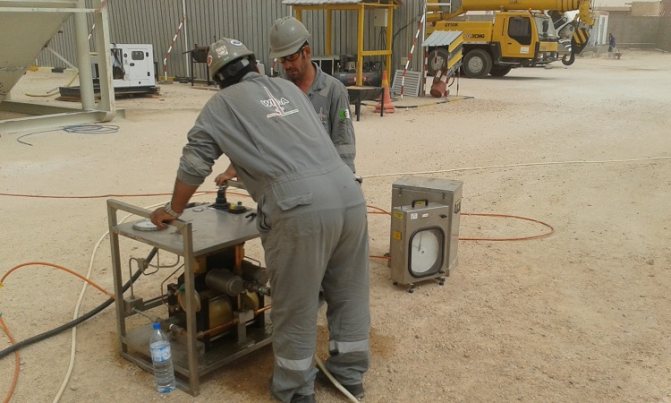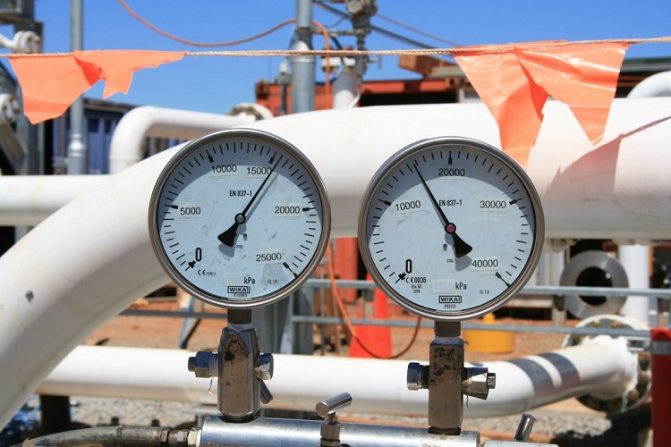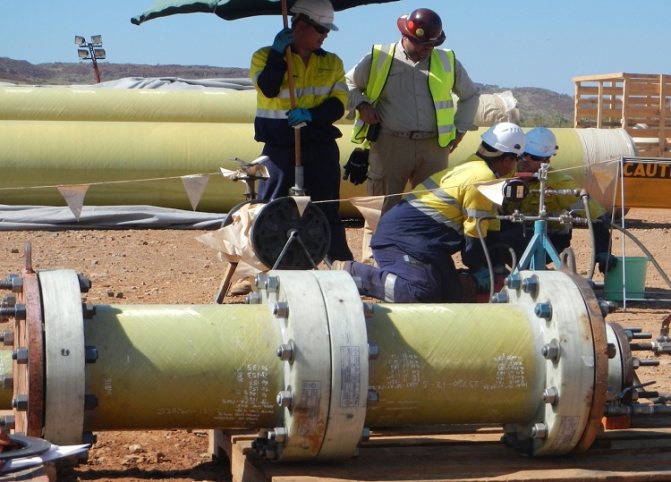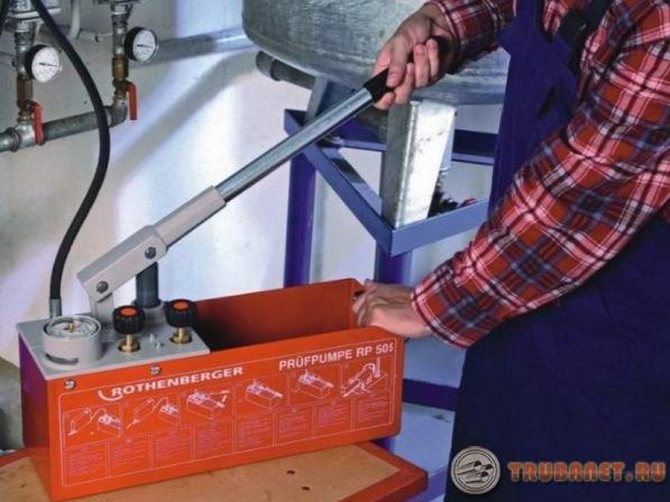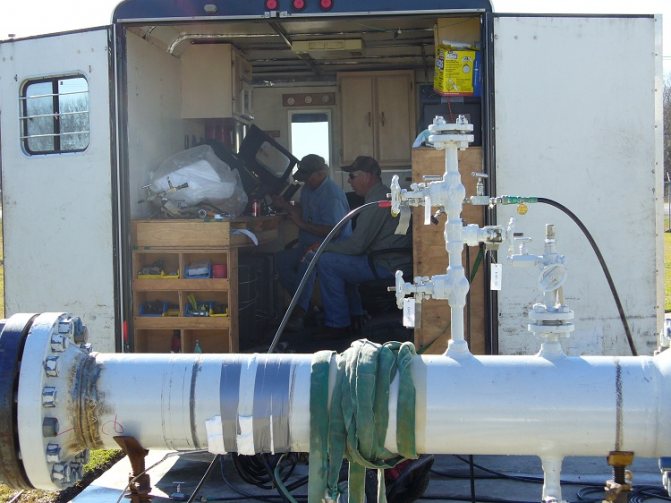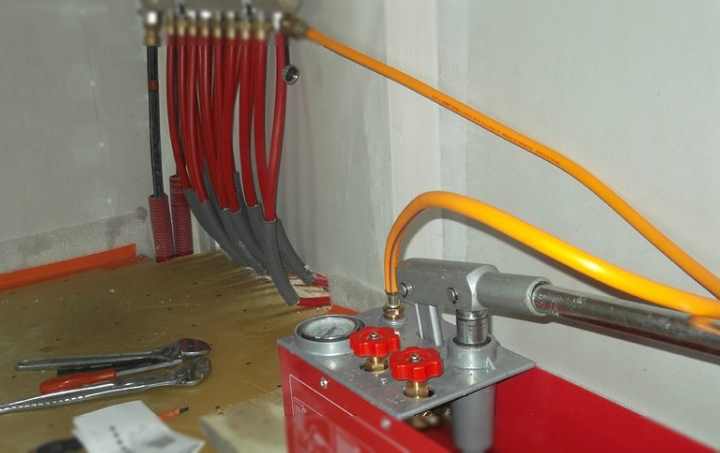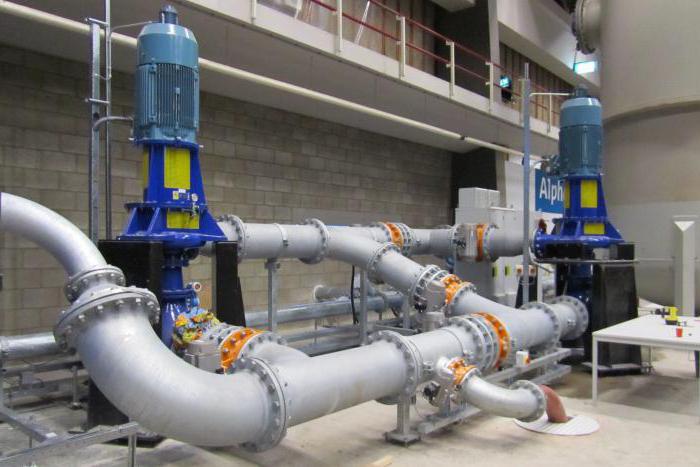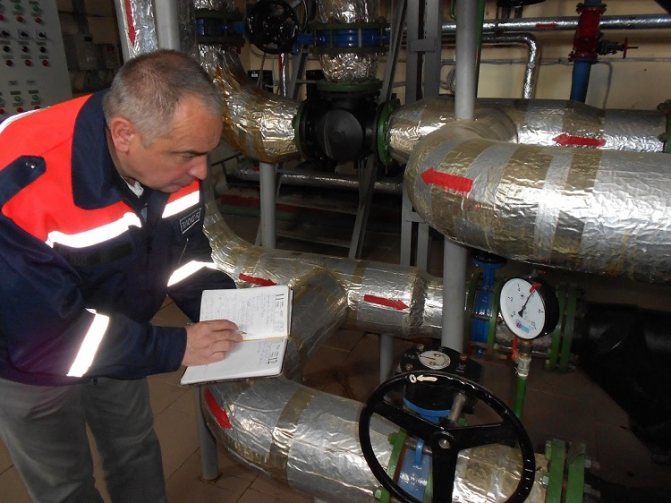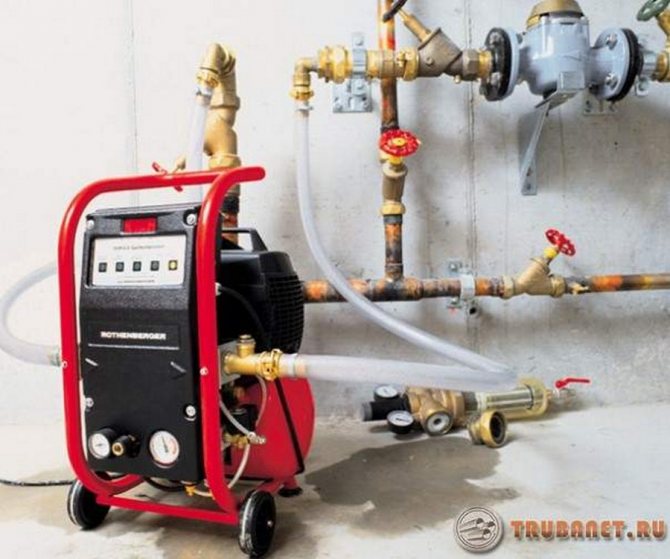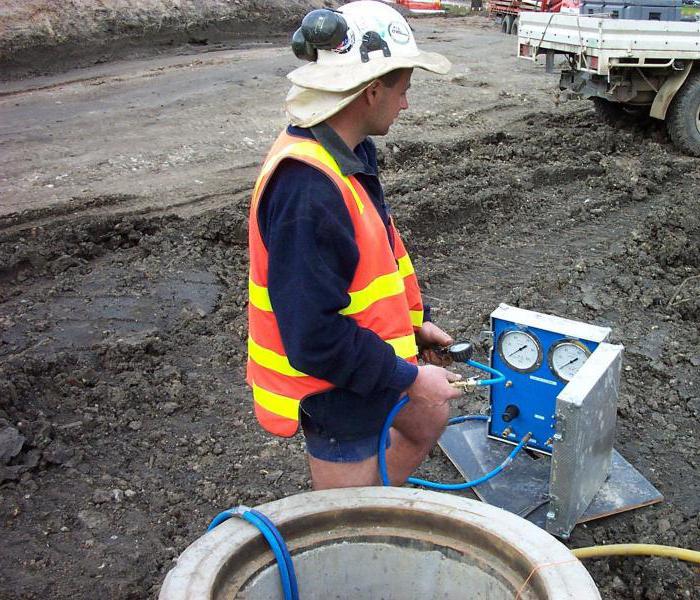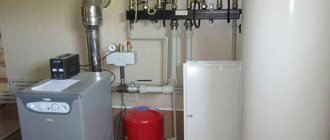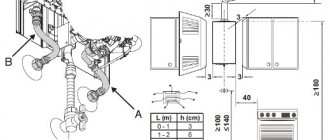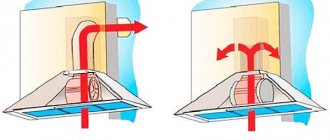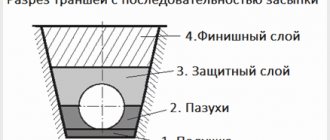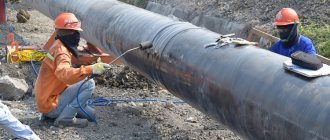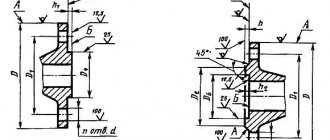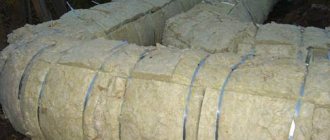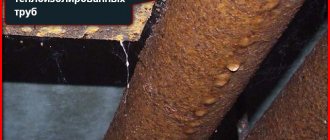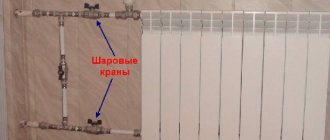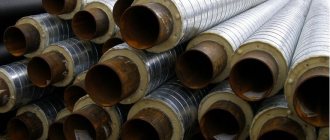Hydraulic testing is a series of testing activities carried out in accordance with the provisions of building codes and regulations. In the course of work, the tightness, strength and volume of the system are determined, the compliance (or non-compliance) of pipe products with the requirements specified in the regulatory documentation is established, all defects of the systems are revealed at the stage of their installation and operation.

When is a hydraulic test necessary?
Hydraulic tests that comply with the SNiP rules are mandatory for internal fire networks, hot and cold water supply pipes, heating systems, process pipelines in the following cases:
- During the production of pipes. Both the pipe products themselves and the components of pipeline systems are tested.
- After the installation of utilities.
- At various stages of operation as a preventive measure or after major repairs.
Preparatory activities
Before testing it is necessary:
- Divide the pipeline into conventional parts. Private communications for household use are usually fully tested.
- Inspect the piping system.
- Check the technical documentation for the system.
- In places where the communication is conditionally divided into parts, fix the valves.
- Connect pressing machines and fillers to temporarily laid communications.
- Disconnect the tested area from the general system and equipment, plug it out.
Installing the appliance in the heating system
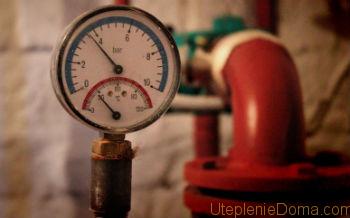

The pressure gauges are mounted using special three-way fittings. Thanks to them, devices are changed and serviced without stopping the entire heating system. At the same time, taking into account the different pressure in each area, more than one pressure gauge can be installed inside a house (or apartment) equipped with a heating boiler. The presence of several devices also simplifies the manometric test of pipelines, which is periodically carried out to control the reliability of heating.
The process of installing a pressure gauge is not particularly difficult for most people - the work does not require either special experience or specialized tools. To mount the device on a specially designed fitting, the presence of an ordinary plumbing kit is quite enough. However, if the option with a pressure gauge insert into the supply pipeline is chosen, the installation will require a welding machine.
Professional hydraulic calculation of heating systems is not always needed, but only at large facilities.
To protect the insulation from moisture, waterproofing and vapor barrier are used, which differ in their characteristics.
When using centralized heating, the installation of the device is not included in the user's tasks - it is located as part of a hydroelectric complex, usually located in the basement of a building. The ideal place to place the pressure gauge is in the area directly next to the boiler. It is undesirable to place other fittings between the device and the boiler (see How to install a solid fuel boiler, piping).
Hydrotesting procedure
In accordance with the standards, the check is carried out in a certain sequence:
- cleaning the network;
- installation of taps and pressure gauges;
- ensuring the flow of water;
- filling the isolated area with water to the required level;
- marking of defective parts of the pipeline;
- repair of identified problems;
- re-inspection after repair work;
- disconnecting the inspected area from temporary communication, removing water from the pipeline;
- dismantling of measuring instruments, taps and plugs.
Determination of the additional volume of water
After performing a tightness test, as a rule, the additional volume of fluid in the system is calculated. This process takes place in the following sequence:
- The pressure level in the structure is again increased by pumping liquid from the measuring tank. The pressure indicator should be the same as in the hydraulic test, that is, exceed the standard values by 1.25–1.5 times.
- The time when the leak test ended must be remembered.
- At the third stage, the final water level in the measuring tank is measured.
- Next, the time interval that the communication check took (in minutes) is determined.
- Calculation of the volume of liquid pumped from the measuring tank (for 1 case).
- Calculation of the difference between the pumped-in and the liquid removed from the pipeline (for 2 cases).
- Calculation of the actual consumption of the additionally injected fluid according to the formula: qn = Q / (Tk-Tn).
Method of hydrotesting for strength and tightness
Specific test conditions are established, depending on the material of the system elements - cast iron, steel, polymers.
Strength test activities include the following steps:
- A test pressure is created in the system and held for 10 minutes. If the set pressure drops by more than 0.1 MPa, the test is stopped.
- The pressure is reduced to operating values and maintained by pumping water.
- The pipeline is inspected for defects.
- If defects are found, then they are corrected and re-checked.
- If there is no damage, the tests are repeated immediately to confirm the results of the first check.
In accordance with the instructions set out in the regulations, the value of the test pressure during hydraulic testing of pipelines is 1.25 of the maximum established by the technical documentation for this communication system. The time for hydrotesting the pipeline for strength should not exceed 10 minutes.
Leakage control is carried out in several stages:
- the start time of the tests is recorded;
- the initial water level is noted in the measuring tank;
- determine the pressure drop in the system.
After carrying out the leak test, calculate the additional volume of water in the tested section of the pipeline.
Hydrochecking methods:
- Gauge: using gauges that indicate all pressures during checks.
- Hydrostatic. This is the most popular method for immediately establishing the behavior of a piping system under increased loads.
Gauge and hydrostatic testing of pipelines
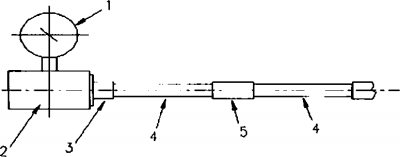

According to the requirements of SNiP, before starting the utility network, pressure testing of pipelines for tightness should be performed. Carrying out such a check allows you to identify in advance defective sections of the line that can collapse when the operating pressure is exceeded. This significantly reduces the risk of emergencies in the heating, plumbing or other engineering system.
Technology features
The hydrostatic pipe test procedure is as follows:
- Pipeline structures are thoroughly cleaned and accumulated contamination is removed from them. This is necessary to improve the accuracy of the measurement results.
- Several independent manometers are connected to the water supply system. The devices are used to determine the pressure in the tested circuit, as well as to determine the leaks of the working medium.
- The system is filled with water, creating a pressure on the selected section of the line that exceeds the operating rate by 20-25%.
- During the exposure time, specialists closely monitor the readings of the measuring instruments. If the pressure begins to drop, this is interpreted as a sign of insufficient pipeline tightness. If the readings of the pressure gauges remain unchanged during the holding time, this indicates that there are no leaks and that the pipe is in good condition.
- Based on the results of the hydraulic test, specialists draw up an act in which the detected problems are indicated and recommendations for their elimination are provided. If necessary, defective sections of a heating or other mains are repaired or replaced.
The base price of services for pressure testing (hydraulic testing) of pipelines of heating systems on the territory of St. Petersburg and Leningrad Oblast
| Services list | unit of measurement | Service price |
| Departure and work of the pressure testing team at the customer's site on a hydrodynamic machine KO-514, KO-502b2 (pump capacity 170 l / min, pressure 0-160 Atm, connecting fitting М39х2, on board at least 5 tons of tap water for refueling into the system and testing , additional water from the customer's side or for a fee, reference monometer from the customer's side) | 1 unit | from 18,000 rubles. |
| Departure and work of the pressure testing team at the customer's site with an electric and manual pressure operator (pump capacity 6 l / min, pressure 0-40 atm, 1/2 ″ connection fitting, water for filling into the system and testing by the customer, reference monometer with customer side) | 1 unit | from 16,000 rubles. |
| Departure and work of a team to perform hydro-pneumatic flushing of the heating system (water for flushing from the customer's side or for a fee, removal of waste generated during flushing for disposal for a fee) | 1 unit | from 20,000 rubles. |
| Departure and work of a team to perform chemical flushing of the heating system (selection and cost of chemicals as agreed with the customer, water for flushing from the customer's side or for a fee, removal of waste generated during flushing for disposal for a fee) | 1 unit | from 30,000 rubles. |
| Complex of works on preparation of IHP for the heating season with delivery to the inspection body | 1 unit | from 80,000 rubles. |
| Setting up a data transmission channel, diagnostics, verification (device + thermometer), maintenance of heat metering units (installation / dismantling is charged separately) | 1 unit | from 20,000 rubles. |
| Chemical flushing of radiators (installation / dismantling is charged separately, lifting work is charged separately) | 1 unit | from 3000 rub. |
| Repair work on heating / heat supply networks, including emergency | 1 unit | from 30,000 rubles. |
| Maintenance, diagnostics, repair of pumping equipment on heating networks, including electrics and automation | 1 unit | from 20,000 rubles. |
| Additional and auxiliary work as agreed or on equipping the estimate calculation | 1 unit | Negotiable |
Drawing up an act based on the results of hydraulic testing of the pipeline
After checking the pipeline system, a document is drawn up confirming that the tests were carried out in accordance with the regulatory documentation, and containing a report on the result of the check. The document displays:
- the name of the pipeline network;
- the name of the checking company;
- data on pressure indicators during testing and the duration of its implementation;
- pressure drop data;
- enumeration of the identified malfunctions or an indication of their absence;
- the date of the inspection;
- conclusions of the commission.
Hydrotesting stands
Test benches for pipeline fittings - research equipment, which includes: bed, hydraulic system, instrumentation, additional devices. Testing on the bench allows you to determine with high accuracy several characteristics at the same time. It is impossible to carry out such tests in the field and with this level of accuracy.
Such stands are adapted for testing fittings for strength, tightness, and functionality of devices. These test complexes are in demand for:
- incoming inspection of the purchased fittings;
- intermediate and final control at manufacturing enterprises that manufacture reinforcing elements;
- checks after repair activities;
- periodic monitoring of the functionality of the safety valves.
Tests for strength and tightness of the valve body are carried out under static loading by increased pressure. The working medium of the hydraulic system is water or oil.
Preparatory stage before checking
Before testing the system, the pipes are inspected for visual faults. This is how the readiness of the pipeline for testing is determined.
To prepare for testing:
- Carefully examine the joints.
- Determine the correct installation of the fittings.
- Support structures, suspensions are checked.
- Locking devices are tested on how freely they open and close.
- Determine how quickly air can be removed from the pipeline.
Suitable air temperature during the test is not lower than 15 degrees above zero. External pipelines are purged before starting work to remove contaminants inside the system.

